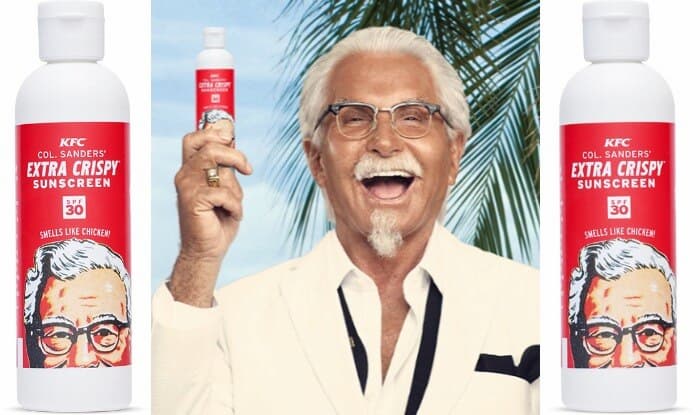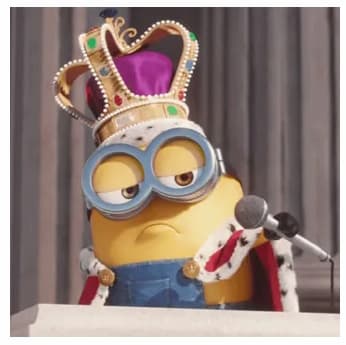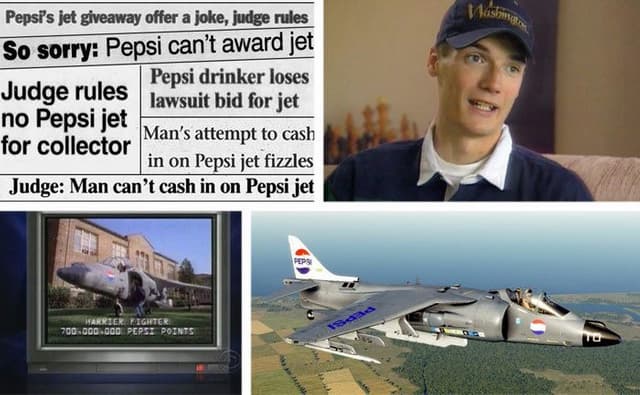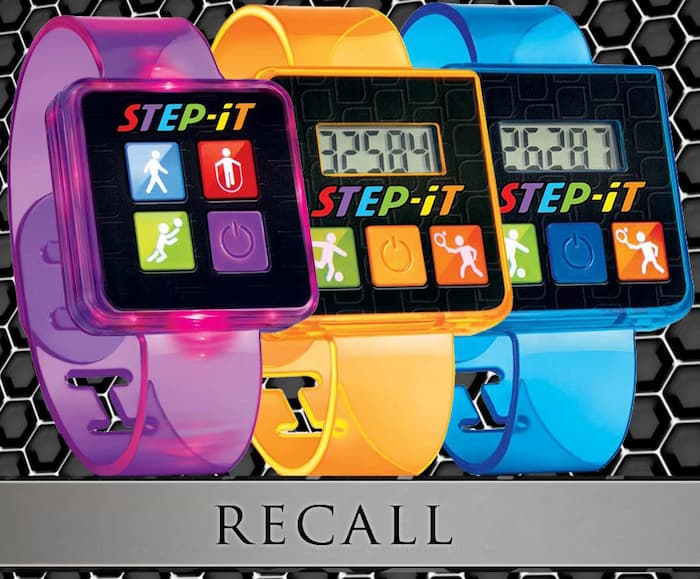Search Results

9 October, 2023
Promotional Products Gone Wrong: Hilarious Marketing Mishaps
In the realm of marketing, promotional products are seen as tried-and-true tools for brand awareness. When done right, they create a lasting impression, but when they go wrong, they can leave a mark of an entirely different kind. Here are some hilarious real-life examples of promotional products that turned into unforgettable marketing blunders.
The Olympic Mittens

When Vancouver was chosen to host the 2010 Winter Olympics, the excitement in the city was palpable. For Canada, the Olympics were more than just a sporting event; they represented an opportunity to showcase Canadian culture, unity, and pride on the world stage. With this in mind, the importance of every detail - from the lighting of the Olympic flame to the souvenirs - was felt deeply.
One of the standout souvenirs from this event was the iconic red mittens featuring the Olympic logo. They symbolised everything Canadian: the vibrant red reminiscent of the Canadian flag, the warmth for the chilly Canadian winters, and the Olympic rings signifying unity and sportsmanship. They were stylish, and functional, and soon became a must-have item for both visitors and locals alike. In terms of sales, the mittens flew off the shelves, with thousands donning them in support of the games.
However, as the origin of the mittens came to light, a shadow was cast over this seemingly perfect memento. Instead of being produced on Canadian soil, supporting local artisans and manufacturers, it was discovered that they were made in China. This revelation caused quite a stir among Canadians and turned into a hot topic of debate.
There were several layers to the criticism:
Missed Economic Opportunity: The Olympics are a massive investment for any host city, with the potential for positive economic returns through tourism, broadcasting rights, and merchandise sales. By outsourcing the production of one of the event's most popular items, Vancouver missed an opportunity to recirculate some of the money spent on the Olympics back into its economy.
Lost Essence of Authenticity: For many, the essence of a souvenir lies in its authenticity. Producing the mittens overseas stripped them of this essence, turning a symbol of Canadian pride into just another mass-produced item.
Undermining Nationalistic Sentiment: At its core, the decision to produce the mittens outside of Canada was seen by many as a contradiction to the very spirit of the Olympics being held in Vancouver. The games were a chance to put Canada on display, and the mittens could have been a testament to Canadian craftsmanship.
In defense, some argued that producing the mittens in China allowed for a lower price point, making them more accessible to a wider range of people. However, this rationale did not hold up against the lost opportunity to support local industries during such a significant national event for many Canadians.
2. The KFC Sunscreen:

2016 saw KFC make an unexpected and aromatic venture into the realm of skincare. Renowned for its "finger-licking good" fried chicken, the fast-food giant brought this iconic scent to a product vastly different from its regular offerings: sunscreen. The product's premise was simple but audacious - a sunscreen that captured the aroma of KFC's signature fried chicken.
As a behemoth in the fast-food industry, KFC was no stranger to creative marketing strategies. The chicken-scented sunscreen was conceptualised as a promotional gimmick to generate buzz and reinforce the brand's image of having irresistibly good chicken. By associating the delicious aroma with sun protection, KFC aimed to evoke feelings of summertime picnics and outdoor fun.
Upon launch, the promotional sunscreen immediately caught the public's attention. Social media was abuzz with a mix of intrigue, amusement, and sheer disbelief. Many consumers clamoured to get their hands on the limited-edition product, eager to experience this novelty for themselves.
However, the reality of the product was a tad different from its whimsical concept. Users soon found that while the idea of smelling like their favourite fried chicken snack might seem delightful in theory, in practice, it was far less appealing. The scent was overpowering, and instead of evoking mouth-watering cravings, it left users feeling as though they had been marinated in chicken seasoning. Not the most appealing aura for a day at the beach or an outdoor gathering.
Moreover, concerns arose regarding attracting unwanted attention, not from fellow beachgoers, but from insects and wildlife drawn to the savoury aroma. This added a comical but problematic dimension to the sunscreen's usage.
Lessons in Marketing and Product Development
Despite its questionable practicality, the KFC sunscreen achieved its goal from a marketing perspective: it generated substantial chatter and kept the brand in the spotlight. However, it also offered crucial lessons:
- Innovative Doesn't Always Mean Functional: While pushing boundaries is essential in marketing, it's crucial to ensure that a product, even a promotional one, has a functional place in consumers' lives.
- Brand Alignment is Vital: While the sunscreen did highlight KFC's signature scent, it ventured too far from the brand's core – food. This disjointed product move left some consumers bemused and others skeptical of the brand's direction.
- Buzz Isn't Always Success: While the product certainly generated buzz, its questionable usability meant that it didn't translate into a positive and lasting impression for every consumer.
The KFC sunscreen serves as a fascinating case study in branding and promotional products. It underscores the importance of aligning novelty with usability and ensuring that even the most audacious marketing strategies align with the brand's essence and its consumers' needs. While the sunscreen might have been a sizzling topic of conversation, its legacy in the annals of marketing will likely be a flavourful misstep.
3. Google's April Fools Mic Drop:

April Fools' Day is renowned for light-hearted pranks and jests. Brands across the world indulge in the spirit of the day by announcing fake products, launching humorous campaigns, or introducing temporary features. Most are met with chuckles, but every now and then, a prank can miss its mark. Enter Google's infamous "Mic Drop" mishap of 2016.
Google, known for its innovative products and features, decided to add a quirky twist to its popular email service, Gmail. The “Mic Drop” feature was introduced as a fun alternative to the regular 'Send' button. When users opted for 'Mic Drop', not only would their email be sent, but it would also attach a playful GIF of a minion (from the "Despicable Me" movie franchise) confidently dropping a microphone - a widely recognised gesture implying "end of discussion."
The feature's intention was clear. It was to provide users with a lighthearted way to end email threads, adding a touch of humour to mundane communications.
The Fallout
Almost immediately after its introduction, users began sounding the alarm. The 'Mic Drop' button was placed dangerously close to the standard 'Send' button, leading to unintentional clicks. This design oversight was problematic, as the implications of sending such a GIF were not always humourous, especially in professional contexts.
Users took to social media and forums to share their horror stories. Some recounted sending the 'Mic Drop' GIF in serious work emails, while others lamented its appearance in correspondence regarding sensitive issues. Particularly cringe-worthy were the tales of job seekers who had unwittingly sent the GIF to potential employers, turning their formal applications into unintentional jokes.
The widespread negative feedback and the gravity of the situations users found themselves in due to the feature made it clear that Google's April Fools' prank had backfired.
Google's Response
Recognising the severity of the issue, Google acted swiftly. Within hours, the 'Mic Drop' feature was pulled from Gmail. Google issued a formal apology, acknowledging that they had gotten the joke wrong and expressing regret for the inconvenience and distress caused to their users.
The company also reassured its users that steps would be taken to ensure that future features, even temporary or humourous ones, would be rigorously tested to avoid such pitfalls.
Lessons from the Mic Drop Debacle
The 'Mic Drop' incident serves as a potent reminder that even the most well-intentioned pranks can have unintended consequences, especially in a digital age where communication tools are vital.
While the 'Mic Drop' GIF might be humourous in casual settings, emails serve multiple purposes, from casual chats to crucial business communications. Brands should consider the diverse contexts their products are used in before introducing new features. Even if a feature is intended for a short duration, thorough testing is essential to ensure it doesn't disrupt user experience.
Google's quick action in removing the feature and issuing an apology highlighted the importance of brands being agile and responsive to user feedback. The 'Mic Drop' incident serves as a case study in how even the biggest and most revered tech giants can occasionally misstep. The key lies in recognising errors, making amends, and ensuring lessons are learned for the future.
4. The Pepsi Points Harrier Jet

In the realm of marketing missteps, few stories are as legendary (or as audacious) as the tale of Pepsi and the Harrier Jet. A jest in a commercial quickly spiraled into a legal battle, putting a spotlight on the need for clarity in advertising and the unpredictability of promotional campaigns. It even became a docu-series on Netflix
Setting the Scene
1995 saw Pepsi introduce its "Pepsi Points" campaign, where consumers could accumulate points from buying Pepsi products. These points could then be exchanged for merchandise listed in a catalogue. The idea was to incentivise brand loyalty and encourage repeat purchases.
In a commercial for the campaign, alongside items like T-shirts and sunglasses, Pepsi whimsically showcased a Harrier Jet - a military-grade aircraft known for vertical takeoffs and landings. The price tag? A whopping 7 million Pepsi Points.
The Audacious Bid
Enter John Leonard, a business-savvy individual with an eye for detail and, as it turned out, a sense of daring. Leonard noted that the commercial and the associated catalogue did not specifically stipulate that the jet was not obtainable. In the world of contractual obligations, such oversight could be seen as an open door.
Instead of trying to drink 7 million Pepsi Points worth of soda, Leonard found a loophole. The official rules allowed customers to buy Pepsi Points for 10 cents each. So, raising $700,008.34 through investors (the additional $8.34 was for shipping and handling), he acquired the necessary points to claim the jet without draining a single Pepsi can.
Upon presenting his points and the demand for the Harrier Jet, Pepsi was, unsurprisingly, taken aback. The jet, priced around $23 million at the time, was clearly intended as a humorous exaggeration in the advertisement.
The Legal Tussle
Leonard took the matter to court when Pepsi refused to honour the "offer." Given the terms presented in their promotional materials, he argued that the company was contractually obliged to provide the jet.
The case, Leonard v. PepsiCo, Inc., drew significant attention. The court was tasked with determining if a commercial, intended to be humorous, could be seen as a legitimate offer in the eyes of the law.
Ultimately, the court sided with Pepsi, ruling that the commercial had been a clear exaggeration, and no objective person could reasonably conclude that the commercial actually offered consumers a Harrier Jet.
Reflection and Legacy
The Pepsi Points Harrier Jet episode is now a staple in marketing and legal circles, underscoring several lessons.
- Clarity in Advertising: While humour and exaggeration are common in advertising, it's essential that the terms and conditions associated with any promotion are crystal clear.
- Expect the Unexpected: Marketers must anticipate unconventional responses from consumers and be prepared for any eventuality.
- Legal Preparedness: Given the vast reach of advertising campaigns, companies need to ensure that their promotional materials are legally sound.
While Pepsi emerged victorious from the courtroom, the saga is a testament to the unpredictability of promotional campaigns. The tale of the Harrier Jet continues to serve as both a cautionary tale and a delightful anecdote about one individual's audacious attempt to soar with a jest.
5. McDonald's Fitness Tracker:

The fast-food industry has long faced scrutiny regarding its contributions to global health issues, primarily obesity. As a leader in this sector, McDonald's often finds itself at the centre of this debate. Their answer in 2016? Introduce a fitness tracker in their iconic Happy Meals. What seemed like a commendable effort to shift the narrative quickly became a cautionary tale on brand alignment and product safety.
In the face of mounting pressure to offer healthier options and contribute positively to the global health discourse, McDonald's sought ways to align with the wellness trend. By 2016, fitness trackers had become ubiquitous. They were seen as an accessible entry point to healthier living, making them an attractive option for the fast-food giant. The idea? Counterbalance the perception of fast food with a tool that encourages physical activity.
Dubbed the "Step-it," the fitness tracker was a basic device meant to count steps and blink according to the pace of the wearer's activity. Designed with children in mind, the gadget was colourful, lightweight, and was meant to be a fun way to motivate kids to move more.
Including a fitness tracker in the Happy Meal seemed like a strategic move. On the one hand, it addressed the concern of children's sedentary lifestyles. On the other, it was a nod to parents, signalling that McDonald's was investing in the health of their young customers.
While the Step-it's introduction might have been well-intentioned, it wasn't long before the narrative began to shift. Parents began reporting cases of their children experiencing skin irritations, rashes, and in some instances, burns from wearing the tracker. The adverse reactions and the device's proximity to children's skin made for a worrying situation.
McDonald's acted promptly, recalling millions of the devices just days after their launch. Their quick response was a testament to their commitment to customer safety. However, the damage to their reputation and the irony of the situation was not lost on the public.
Beyond the immediate safety concerns, the Step-it debacle raised larger questions about brand alignment. The very premise of a fitness tracker being bundled with a fast-food meal was met with scepticism. Critics viewed it as a superficial attempt to mask the inherent health concerns associated with frequent fast-food consumption. The juxtaposition of a health-focused device with a meal that often exceeds recommended daily caloric and sodium intakes for children was seen as paradoxical.
The Step-it saga is a lesson in the importance of brand congruency and thorough product testing. While McDonald's attempt to marry the worlds of fast food and fitness was innovative, it underscored the challenges of navigating modern health discourses for brands historically positioned differently. The mishap serves as a reminder that while adapting to contemporary conversations is crucial, authenticity and safety should always be at the forefront of such endeavors.
The Wrap Up
In the world of promotional products, the line between a hit and a miss can be razor-thin. While these mishaps may have been embarrassing at the time, they serve as entertaining reminders that even the biggest brands can get it wrong. But as the saying goes, "There's no such thing as bad publicity," and these products certainly got people talking!
The PromotionsOnly Team

